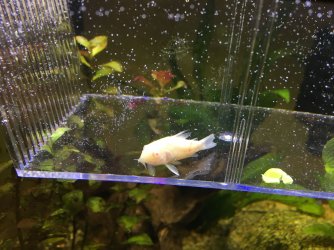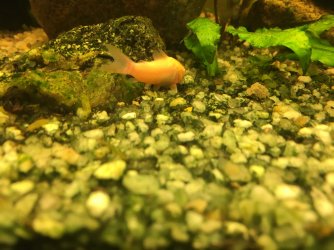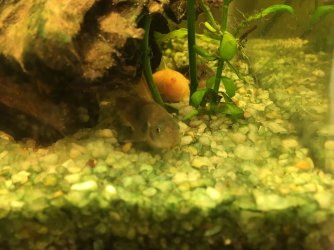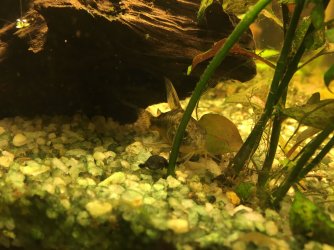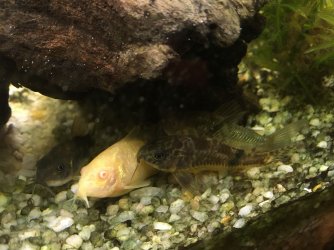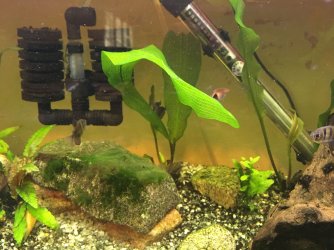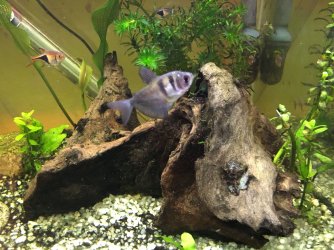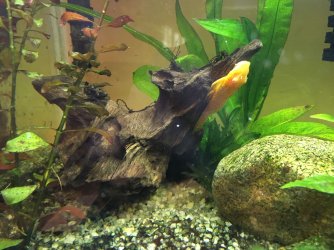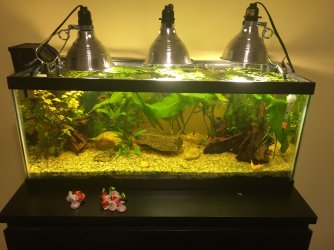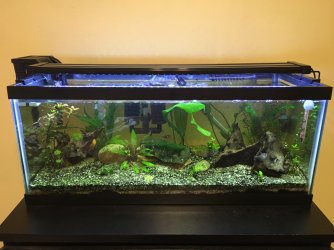Hey everyone,
I've had 6 corys for a long time in a 20 gal long and suddenly one of them started swimming upside down and close to the surface. When he wasn't, he would either just sit in one spot or swim around the middle/top areas of the tank. This isn't normal for him. He also has some torn fins and some weird red spots in the middle of his body almost looking like blood. The other 5 have stopped being as active as they were before. The changes I made to the tank recently are adding a sponge filter and I switched from fluorescent light to an LED light. Additionally I have two filters on the tank, namely a 20 gallon canister filter and a standard 5-15 gallon hang on the back filter.
I was thinking maybe the sponge filter created so much CO2 in the tank and made him bloated? I read other places and they said the fish could be getting bloated and to feed a pea to it. I did so and he ignored the pea and just hung out in the bottom of the tank. I just put him into a nursery tank in the same tank with a pea and I'm hoping he will eat it and/or get better. Did I do the right thing? Please help.
Thanks,
Bryan
I've had 6 corys for a long time in a 20 gal long and suddenly one of them started swimming upside down and close to the surface. When he wasn't, he would either just sit in one spot or swim around the middle/top areas of the tank. This isn't normal for him. He also has some torn fins and some weird red spots in the middle of his body almost looking like blood. The other 5 have stopped being as active as they were before. The changes I made to the tank recently are adding a sponge filter and I switched from fluorescent light to an LED light. Additionally I have two filters on the tank, namely a 20 gallon canister filter and a standard 5-15 gallon hang on the back filter.
I was thinking maybe the sponge filter created so much CO2 in the tank and made him bloated? I read other places and they said the fish could be getting bloated and to feed a pea to it. I did so and he ignored the pea and just hung out in the bottom of the tank. I just put him into a nursery tank in the same tank with a pea and I'm hoping he will eat it and/or get better. Did I do the right thing? Please help.
Thanks,
Bryan


